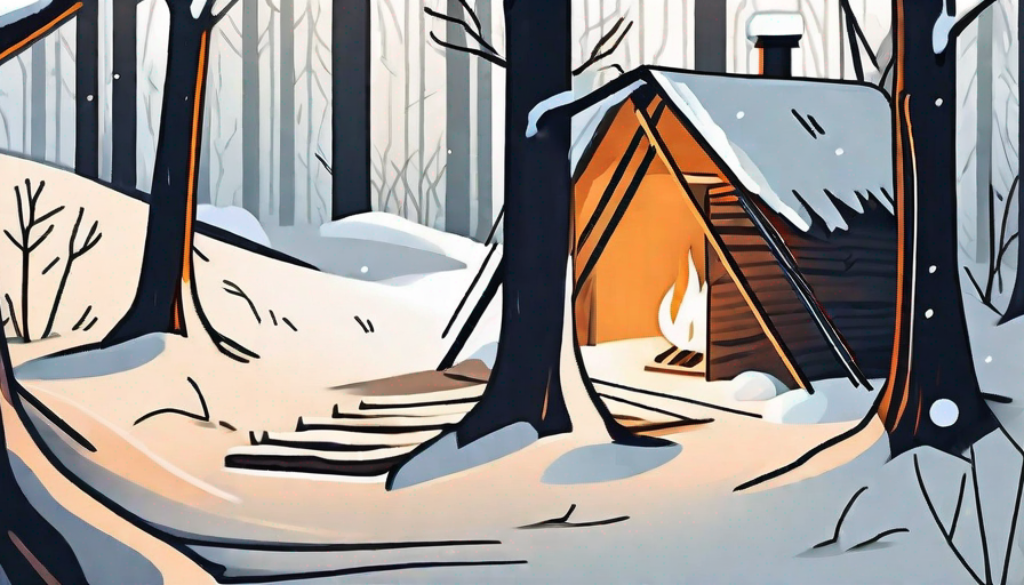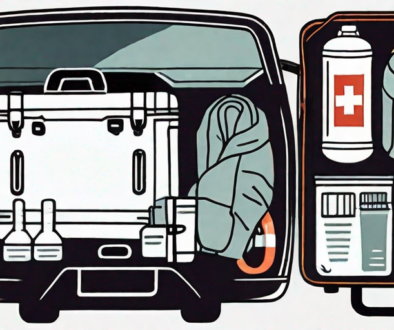Surviving in the Winter Wilderness

When winter descends, the wilderness transforms into a beautiful yet perilous landscape. The frigid temperatures and unpredictable weather conditions can pose significant challenges to survival. However, with the right knowledge, skills, and preparation, it is possible to endure and even thrive in such harsh environments. This comprehensive guide will delve into the essential keys to surviving in the winter wilderness.
Understanding the Winter Wilderness
Before embarking on any wilderness adventure, it is crucial to understand the environment you will be navigating. In winter, the wilderness can be a harsh and unforgiving place. The cold temperatures can cause hypothermia, frostbite, and other cold-related illnesses. Additionally, snow and ice can make travel difficult and dangerous.
Moreover, winter weather can be unpredictable. Storms can roll in unexpectedly, causing whiteout conditions and making navigation nearly impossible. Understanding these challenges is the first step towards surviving in the winter wilderness.
The Impact of Cold Temperatures
The human body is not designed to withstand extremely cold temperatures for prolonged periods. In such conditions, the body loses heat faster than it can produce it, leading to hypothermia. This condition can be life-threatening if not addressed promptly. Frostbite, another cold-related illness, can cause severe damage to the skin and underlying tissues.
It is essential to understand the signs of these conditions and take immediate action to prevent them. This includes wearing appropriate clothing, staying dry, and finding or creating shelter to protect against the elements.
Challenges of Snow and Ice
Snow and ice can pose significant challenges in the winter wilderness. Deep snow can make travel difficult and exhausting, while ice can create hazardous conditions underfoot. Moreover, snow can obscure landmarks and trails, making navigation challenging.
Understanding how to navigate in these conditions, including how to use a compass and read a topographic map, can be vital for survival. Additionally, knowing how to construct snow shelters or use snow for insulation can turn this challenge into an advantage.
Preparing for the Winter Wilderness
Preparation is key when it comes to surviving in the winter wilderness. This includes physical preparation, such as conditioning your body for the rigors of winter travel, and mental preparation, such as learning survival skills and strategies. Additionally, it involves gathering the necessary gear and supplies for your journey.
Having the right clothing and equipment can make a significant difference in your ability to survive and thrive in the winter wilderness. This includes warm clothing, a reliable source of heat, and tools for navigation and shelter building.
Physical and Mental Preparation
Physical preparation for winter wilderness survival involves conditioning your body for the rigors of winter travel. This includes building endurance through regular exercise and acclimating your body to cold temperatures.
Mental preparation involves learning survival skills and strategies. This includes understanding how to build a fire in snowy conditions, how to find and purify water, and how to signal for help in an emergency.
Gear and Supplies
The right gear and supplies can make a significant difference in your ability to survive in the winter wilderness. This includes warm clothing, a reliable source of heat, and tools for navigation and shelter building.
Essential winter survival gear includes a high-quality winter jacket, thermal underwear, insulated boots, gloves, and a hat. Additionally, a reliable source of heat, such as a portable stove or fire-starting kit, can be a lifesaver in cold conditions.
Survival Skills for the Winter Wilderness
Surviving in the winter wilderness requires a unique set of skills. These include fire-building, shelter construction, water procurement, and navigation. Additionally, knowing how to signal for help in an emergency can be a lifesaver.
While these skills can be learned through books and online resources, nothing beats hands-on training. Consider taking a wilderness survival course or practicing these skills in a controlled environment before venturing into the winter wilderness.
Fire-Building
Fire is a crucial survival tool in the winter wilderness. It provides warmth, a means to cook food and purify water, and a way to signal for help. However, building a fire in snowy conditions can be challenging.
Knowing how to build a fire in the snow, how to find dry firewood in a snowy landscape, and how to maintain a fire in windy conditions are all essential skills for winter wilderness survival.
Shelter Construction
Shelter is another critical survival need in the winter wilderness. A good shelter can protect you from the elements, conserve body heat, and provide a place to rest and recover.
There are many types of winter shelters, from simple snow trenches to elaborate snow caves. Knowing how to construct these shelters and how to insulate them for maximum warmth can be a lifesaver in the winter wilderness.
Conclusion
Surviving in the winter wilderness is a challenging endeavor that requires knowledge, preparation, and the right skills. By understanding the challenges of the winter wilderness, preparing adequately, and mastering essential survival skills, you can increase your chances of surviving and thriving in this harsh environment.
Remember, the wilderness in winter is not just a place of danger, but also of incredible beauty. With the right approach, it can be a place of adventure and discovery. Stay safe, stay prepared, and enjoy the journey.

